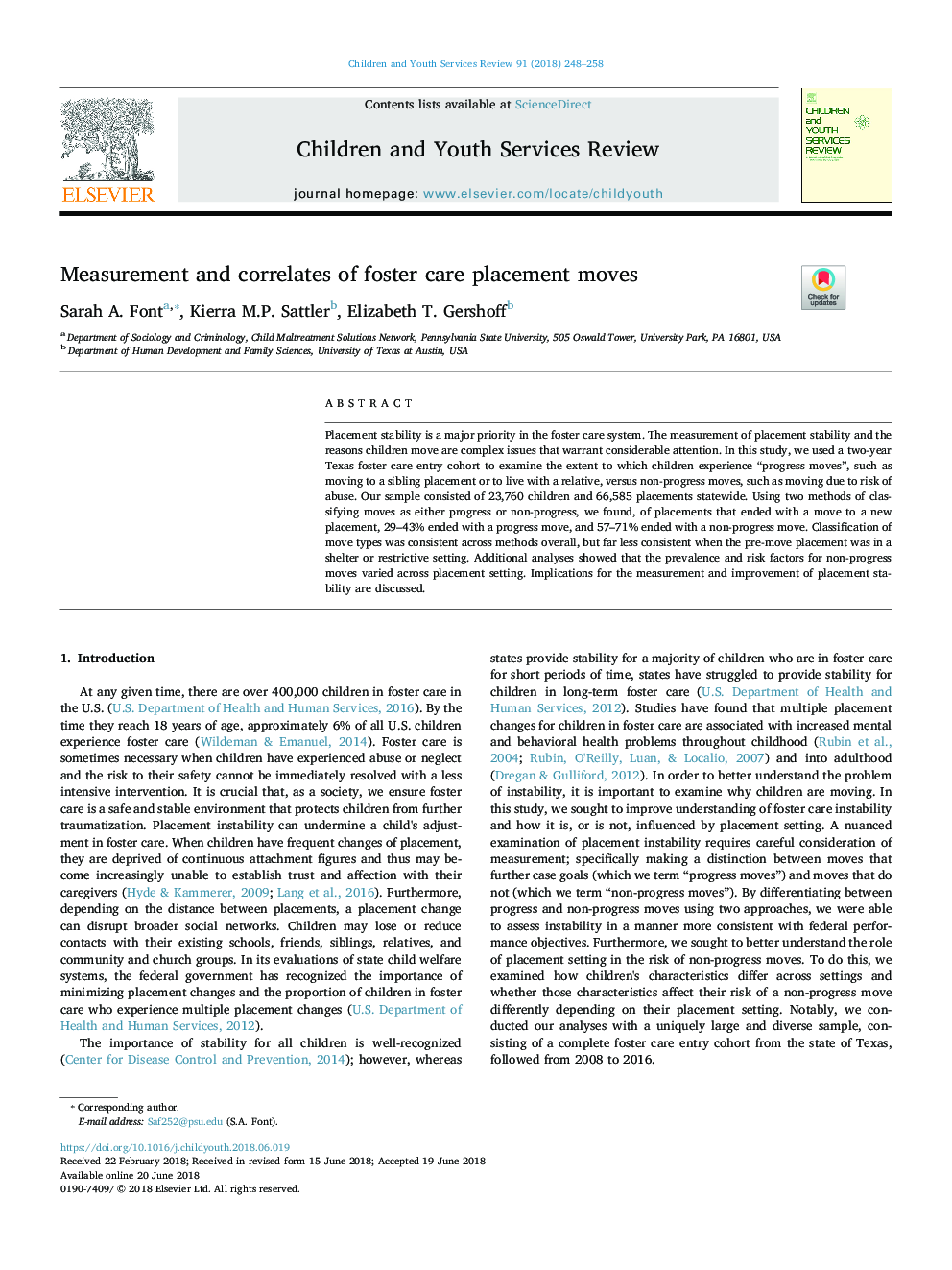| Article ID | Journal | Published Year | Pages | File Type |
|---|---|---|---|---|
| 6832917 | Children and Youth Services Review | 2018 | 11 Pages |
Abstract
Placement stability is a major priority in the foster care system. The measurement of placement stability and the reasons children move are complex issues that warrant considerable attention. In this study, we used a two-year Texas foster care entry cohort to examine the extent to which children experience “progress moves”, such as moving to a sibling placement or to live with a relative, versus non-progress moves, such as moving due to risk of abuse. Our sample consisted of 23,760 children and 66,585 placements statewide. Using two methods of classifying moves as either progress or non-progress, we found, of placements that ended with a move to a new placement, 29-43% ended with a progress move, and 57-71% ended with a non-progress move. Classification of move types was consistent across methods overall, but far less consistent when the pre-move placement was in a shelter or restrictive setting. Additional analyses showed that the prevalence and risk factors for non-progress moves varied across placement setting. Implications for the measurement and improvement of placement stability are discussed.
Related Topics
Health Sciences
Medicine and Dentistry
Perinatology, Pediatrics and Child Health
Authors
Sarah A. Font, Kierra M.P. Sattler, Elizabeth T. Gershoff,
